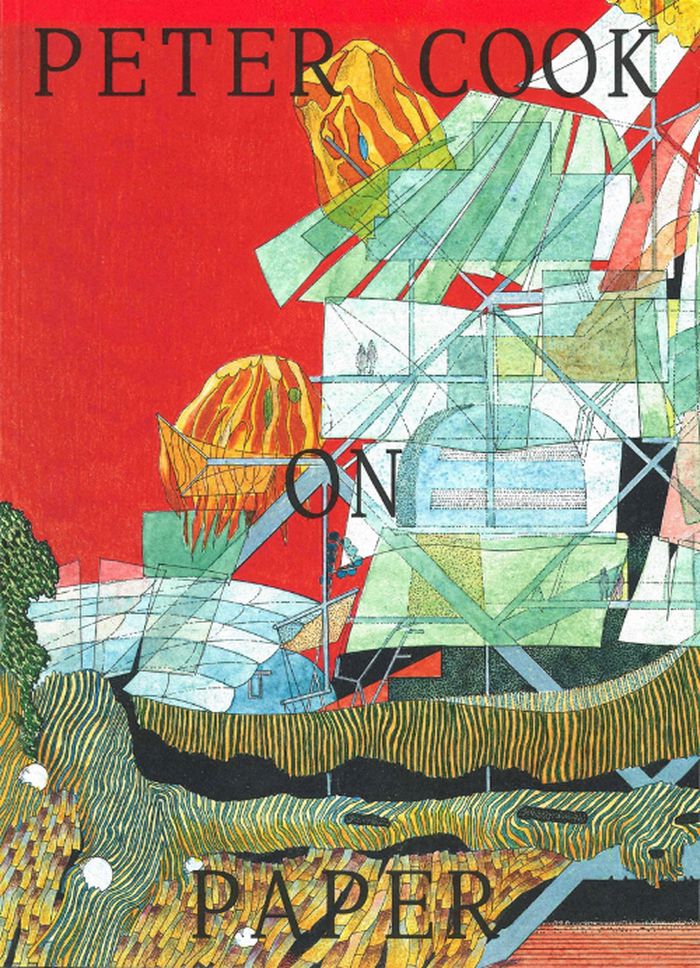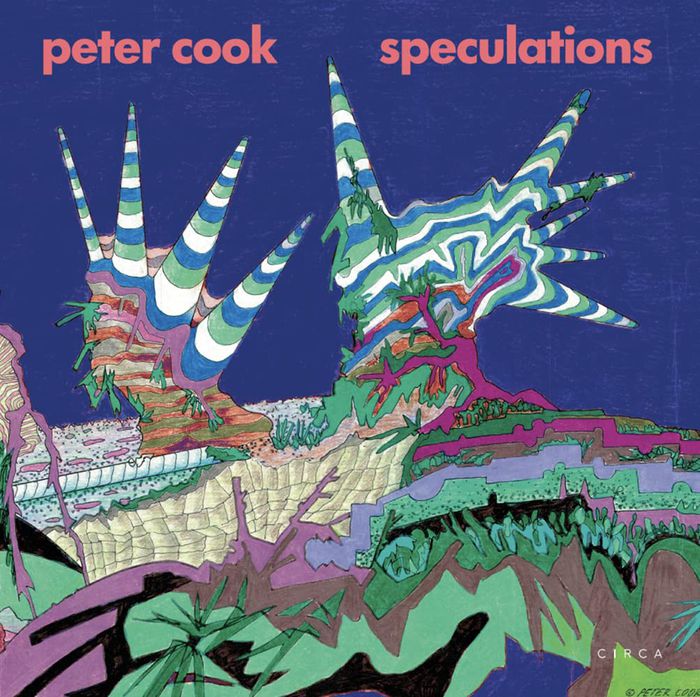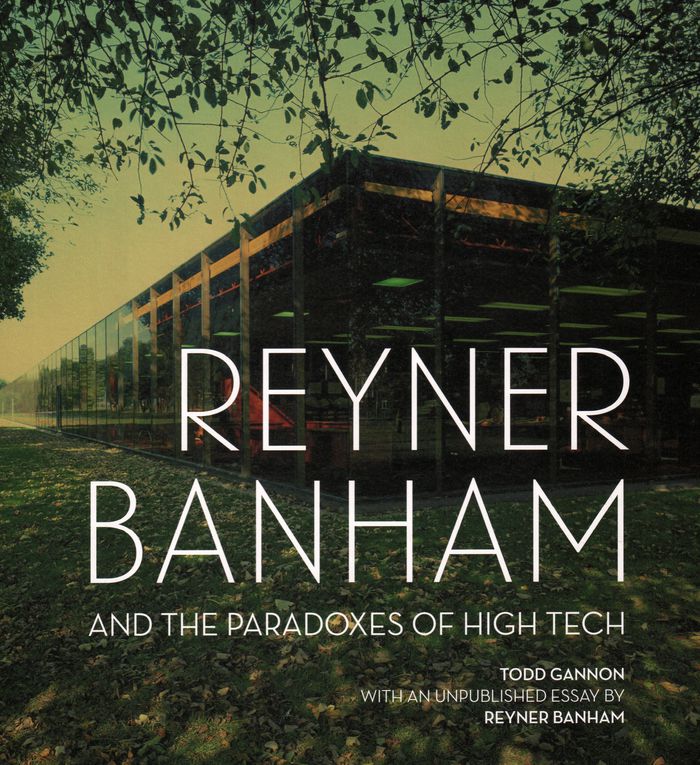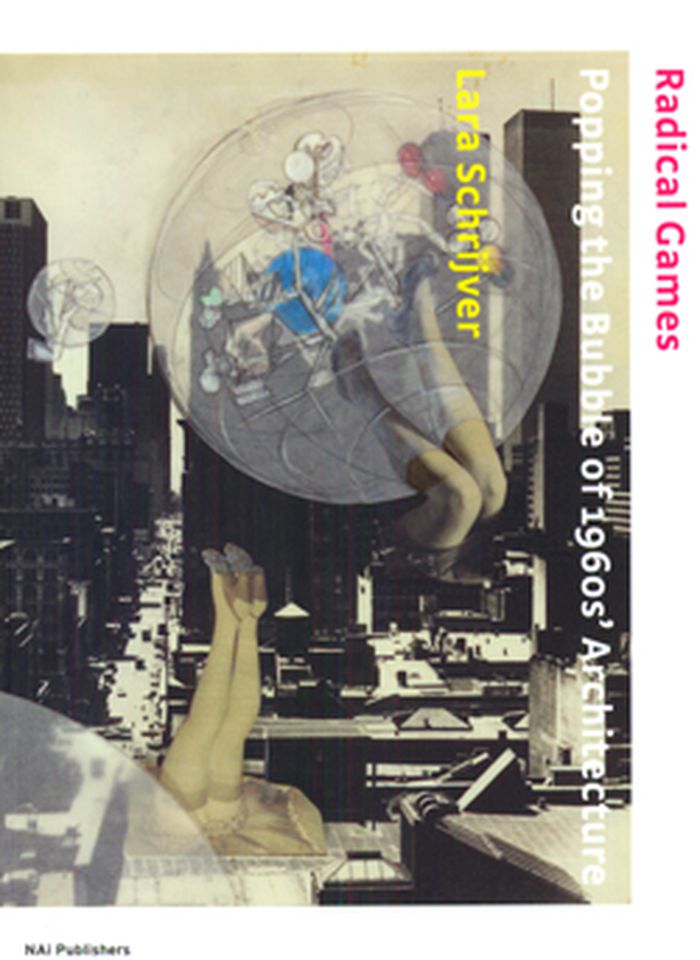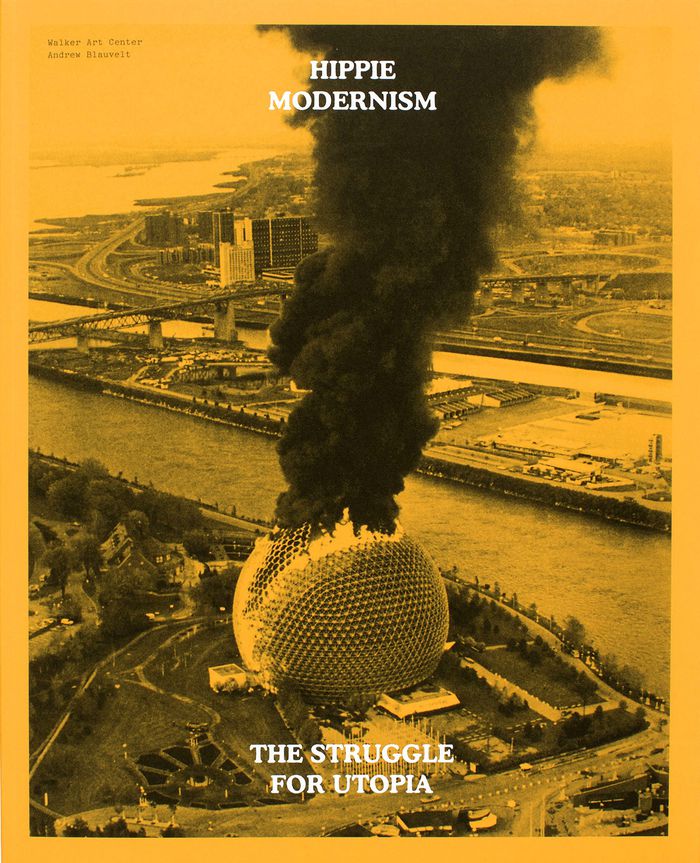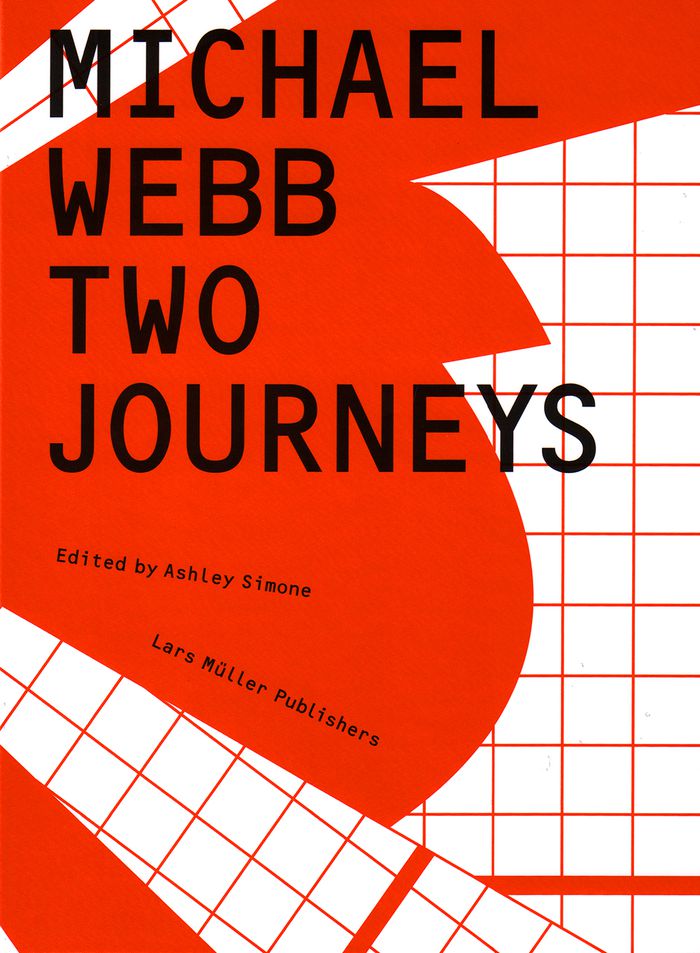Peter Cook on paper
$80.00
(available to order)
Summary:
English architect and writer Sir Peter Cook, renowned for his free-thinking spirit translated into architectural lines and shapes, is perhaps most well-known as the co-founder of the avant-garde architectural group Archigram in the 1960s. A selection of his drawings is offered here as part of the exhibition series “Louisiana On Paper” at the Louisiana Museum of Modern(...)
Peter Cook on paper
Actions:
Price:
$80.00
(available to order)
Summary:
English architect and writer Sir Peter Cook, renowned for his free-thinking spirit translated into architectural lines and shapes, is perhaps most well-known as the co-founder of the avant-garde architectural group Archigram in the 1960s. A selection of his drawings is offered here as part of the exhibition series “Louisiana On Paper” at the Louisiana Museum of Modern Art. Cook believes that visions of the future – whatever it might offer – are most clearly expressed and can best be discussed in drawings. In his work we encounter kaleidoscopic colours and spiralling shapes, voluntary architectural mutations, and twisting and turning buildings transforming into escapist dreamscapes.
Architecture Monographs
Peter Cook : Speculations
$97.50
(available to order)
Summary:
Peter Cook's distinctive drawings have captivated and inspired generations of designers. Freed from stylistic or functional conventions, his graphic speculations have redefined the language of architectural communication. Speculations spans Cook's entire career, presenting some 160 drawings that range from student projects in the 1950s, through Archigram, to new work(...)
Peter Cook : Speculations
Actions:
Price:
$97.50
(available to order)
Summary:
Peter Cook's distinctive drawings have captivated and inspired generations of designers. Freed from stylistic or functional conventions, his graphic speculations have redefined the language of architectural communication. Speculations spans Cook's entire career, presenting some 160 drawings that range from student projects in the 1950s, through Archigram, to new work completed shortly before going to press. Arranged chronologically, these drawings chart the course of what can now be seen as an enthralling architectural adventure. Cook's own observations about the nature of architecture and urbanism, and the concept of the buildable, are complemented by pieces from architects Frank Gehry, Toyo Ito, Thom Mayne and Peter Wilson.
Architecture Monographs
$52.95
(available to order)
Summary:
The period between the 1950s and the 1970s saw the flourishing of a number of radical movements in architecture throughout Europe, producing a wide range of experimental expression. 'Cloud ’68' presents a selection of 173 graphic pieces—including lithographs, drawings, original etchings, and ephemera—that together give a sense of the diverse approaches that thrived in(...)
Architectural Drawing
October 2019
Cloud '68: Paper voice. Smiljan Radic's collection of radical architecture
Actions:
Price:
$52.95
(available to order)
Summary:
The period between the 1950s and the 1970s saw the flourishing of a number of radical movements in architecture throughout Europe, producing a wide range of experimental expression. 'Cloud ’68' presents a selection of 173 graphic pieces—including lithographs, drawings, original etchings, and ephemera—that together give a sense of the diverse approaches that thrived in those years. Drawing from the personal collection of the Chilean architect Smiljan Radic, the book features works by Constant, Guy Debord, Asger Jorn, Haus-Rucker-Co, Archigram, Utopie, Superstudio, and many others. Apart from essays by Tom McDonough and Lara Schrijver Cloud ’68 contains interview fragments by the critic and curator Hans Ulrich Obrist, who talked to the key figures of these movements.
Architectural Drawing
$85.00
(available in store)
Summary:
Designed by Zak Kyes "The work, in full-colour words, pictures, drawings, films and wonderings, has been carried out from 1958 until this morning. Alongside Greene's own texts there are essays by Samantha Hardingham, Sand Helsel, Sam Jacob and Robin Middleton. 'The brink of a conceptual abyss - not a bad place to be?' David Greene (founding member of the legendary(...)
Architecture Monographs
April 2008, London
David Greene: L.A.W.U.N Project #19
Actions:
Price:
$85.00
(available in store)
Summary:
Designed by Zak Kyes "The work, in full-colour words, pictures, drawings, films and wonderings, has been carried out from 1958 until this morning. Alongside Greene's own texts there are essays by Samantha Hardingham, Sand Helsel, Sam Jacob and Robin Middleton. 'The brink of a conceptual abyss - not a bad place to be?' David Greene (founding member of the legendary 'Archigram', this is the first monograph on his solo work) and his collaborators invite you to view projects that chart a peripatetic drift from form to invisibility, in the process illuminating the possibilities for architecture in a culture dominated by information technology. Accepted definitions and applications of new technologies are doggedly raised and questioned."
Architecture Monographs
$86.95
(available to order)
Summary:
The avant-garde Italian architecture collective Superstudio was founded in 1966 by Adolfo Natalini (1941–2020) and Cristiano Toraldo di Francia (1941–2019), and quickly leaped to the forefront of the 1960s radical architecture movement alongside the likes of Archigram and Haus-Rucker-Co. Through their architectural projects (housing, industrial buildings, banks,(...)
Architecture Monographs
April 2021
Superstudio Migrazioni (English)
Actions:
Price:
$86.95
(available to order)
Summary:
The avant-garde Italian architecture collective Superstudio was founded in 1966 by Adolfo Natalini (1941–2020) and Cristiano Toraldo di Francia (1941–2019), and quickly leaped to the forefront of the 1960s radical architecture movement alongside the likes of Archigram and Haus-Rucker-Co. Through their architectural projects (housing, industrial buildings, banks, interiors), design objects, photocollages, drawings, texts, installations, models, films and exhibitions, Superstudio found brilliant and highly inventive ways in which to inhabit a world transformed by capitalist forces and technological evolutions. This slipcased, 400-page volume explores their oeuvre through the lens of ''migrations'' (migrazioni). Borrowed from Superstudio’s vocabulary, this term serves as a conceptual and poetic key to the group’s architecture and their works in all mediums.
Architecture Monographs
$73.95
(available to order)
Summary:
Taking as a guide Banham’s habit of structuring his writings around dialectical tensions, Todd Gannon sheds new light on Banham’s early engagement with the New Brutalism of Alison and Peter Smithson, his measured enthusiasm for the ''clip-on'' approach developed by Cedric Price and the Archigram group, his advocacy of ''well-tempered environments'' fostered by integrated(...)
Reyner Banham and the paradoxes of high tech
Actions:
Price:
$73.95
(available to order)
Summary:
Taking as a guide Banham’s habit of structuring his writings around dialectical tensions, Todd Gannon sheds new light on Banham’s early engagement with the New Brutalism of Alison and Peter Smithson, his measured enthusiasm for the ''clip-on'' approach developed by Cedric Price and the Archigram group, his advocacy of ''well-tempered environments'' fostered by integrated mechanical and electrical systems, and his late-career assessments of High Tech practitioners such as Norman Foster, Richard Rogers, and Renzo Piano. Gannon devotes significant attention to Banham’s late work, including fresh archival materials related to 'Making Architecture: The Paradoxes of High Tech', the manuscript he left unfinished at his death in 1988. For the first time, readers will have access to Banham’s previously unpublished draft introduction to that book.
Architectural Theory
$54.00
(available in store)
Summary:
Through three radical critiques of Modernist architecture, illustrated by the iconic--and very different--works of the Situationist International, Venturi Scott Brown and Archigram, Radical Games offers new perspectives on the architecture of the 1960s. It illuminates some of the pitfalls of contemporary architectural thought and questions a number of preconceptions that(...)
Radical games: Popping the bubble of 1960's architecture
Actions:
Price:
$54.00
(available in store)
Summary:
Through three radical critiques of Modernist architecture, illustrated by the iconic--and very different--works of the Situationist International, Venturi Scott Brown and Archigram, Radical Games offers new perspectives on the architecture of the 1960s. It illuminates some of the pitfalls of contemporary architectural thought and questions a number of preconceptions that remain with us from the prevalent discourses of the 1960s. Perched on the cusp of Postmodernism and global capitalism, the critiques in this volume demonstrate a perceptive understanding of Modernism, as well as contemporary conditions, such as our increasingly image-saturated society. It is also clear, however, that these radical projects were so entwined with Modernism that the architectural conversation of the 1960s was driven to an impasse, which the contemporary debate has not yet been able to escape.
Architectural Theory
$72.50
(available to order)
Summary:
Hippie Modernism examines the art, architecture and design of the counterculture of the 1960s and early 1970s. The catalogue surveys the radical experiments that challenged societal norms while proposing new kinds of technological, ecological and political utopia. It includes the counter-design proposals of Victor Papanek and the anti-design polemics of Global Tools; the(...)
Hippie modernism: the struggle for utopia
Actions:
Price:
$72.50
(available to order)
Summary:
Hippie Modernism examines the art, architecture and design of the counterculture of the 1960s and early 1970s. The catalogue surveys the radical experiments that challenged societal norms while proposing new kinds of technological, ecological and political utopia. It includes the counter-design proposals of Victor Papanek and the anti-design polemics of Global Tools; the radical architectural visions of Archigram, Superstudio, Haus-Rucker-Co and ONYX; the installations of Ken Isaacs, Joan Hills, Mark Boyle, Hélio Oiticica and Neville D'Almeida; the experimental films of Jordan Belson, Bruce Conner and John Whitney; posters and prints by Emory Douglas, Corita Kent and Victor Moscoso; documentation of performances by the Diggers and the Cockettes; publications such as Oz and The Whole Earth Catalog; books by Marshall McLuhan and Buckminster Fuller; and much more.
Experimentale architecture
Michael Webb: two journeys
$65.00
(available to order)
Summary:
The artist Michael Webb, trained as an architect, operates at the intersection of art and architecture and is widely known for creatively exploring the outer limits of drawing techniques, including orthographic and perspectival projection systems. He is a founding member of Archigram, which formed at the Architectural Association in London in the early 1960s. The(...)
Architecture Monographs
June 2018
Michael Webb: two journeys
Actions:
Price:
$65.00
(available to order)
Summary:
The artist Michael Webb, trained as an architect, operates at the intersection of art and architecture and is widely known for creatively exploring the outer limits of drawing techniques, including orthographic and perspectival projection systems. He is a founding member of Archigram, which formed at the Architectural Association in London in the early 1960s. The legendary avant-garde group is known for their fantastical projects that were often interpreted as critiques of contemporary architectural theory and practice. "Two Journeys" is the first comprehensive monograph on Webb’s oeuvre and assembles sixty years of the artist’s work into a continuously evolving narrative about the multifaceted relationships among the built environment, landscape, and moving vehicles. He investigates these relationships through the act of drawing using notions of time, space, and speed, which are artfully mediated by the precision of mathematics and tempered by abstraction.
Architecture Monographs
books
Description:
143 pages : illustrations (some color), maps, plans ; 24 x 24 cm
New York : Inventory Press, [2015]
49 cities / WORKac ; with contributions from Yona Friedman [and 4 others].
Actions:
Holdings:
Description:
143 pages : illustrations (some color), maps, plans ; 24 x 24 cm
books
New York : Inventory Press, [2015]
